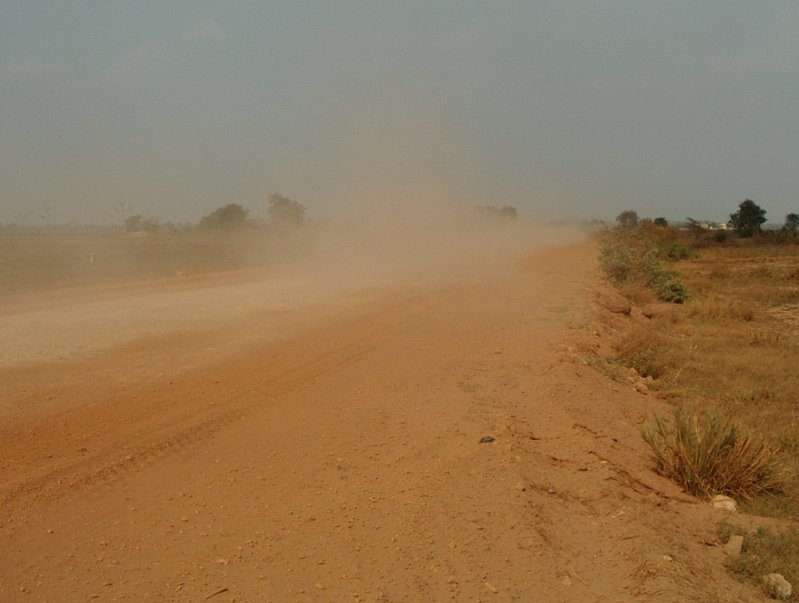
Agricultural News
Subsoil Moisture an Important Consideration for Upcoming Wheat Crop
Mon, 08 Aug 2011 08:56:33 CDT
 The record temperatures and persistent drought conditions experienced this summer have made it more important than usual to consider our subsoil moisture status when developing a management strategy for the upcoming wheat crop. One resource that can be utilized is the Mesonet soil moisture information. This information paints a very bleak picture of our current soil moisture condition, according to Jason Warren, Oklahoma State University Plant and Soil Sciences Assistant Professor. However, we must consider that these conditions do not necessarily represent the current soil moisture in cropland. The Mesonet soil moisture is generally measured under permanent grass. Therefore, these measurements better represent the moisture conditions in our pastures and rangelands.
The record temperatures and persistent drought conditions experienced this summer have made it more important than usual to consider our subsoil moisture status when developing a management strategy for the upcoming wheat crop. One resource that can be utilized is the Mesonet soil moisture information. This information paints a very bleak picture of our current soil moisture condition, according to Jason Warren, Oklahoma State University Plant and Soil Sciences Assistant Professor. However, we must consider that these conditions do not necessarily represent the current soil moisture in cropland. The Mesonet soil moisture is generally measured under permanent grass. Therefore, these measurements better represent the moisture conditions in our pastures and rangelands.
I was interested to see how cropland soil moisture compares to a nearby Mesonet site. Therefore, we collected soil samples to a depth of 4ft at OSU's Lake Carl Blackwell farm located approximately 15 miles west of Stillwater. Samples were collected from soils under a standing corn crop, wheat stubble, stubble invested with weeds (primarily crabgrass) and from the nearby Mesonet station.
As expected the greatest amount of soil moisture was found below the wheat stubble. Much of this stored water is in the surface 16 inches of soil, especially when compared to the weed infested soil. The soil under the standing corn had the least soil moisture and was nearly identical to that found at the Mesonet station under permanent grass. Calculating the total volume of water in each of these situations we find 9.2, 8.3, 6.6, and 6.8 inches in the wheat stubble, weed invested, corn, and Mesonet soils, respectively. Although the difference between the weed invested soil and the clean stubble is only 1 inch of water, notice that the water is distributed near the surface in the wheat stubble were it is more easily available for crop utilization. Also realize that 1 inch of water transpired through a wheat crop will produce 5 bushels, making the difference in the amount of water found in the wheat stubble vs the corn equivalent to 12 bushels of wheat.
The data is meant to serve as an example of how differences in soil management this summer impact soil moisture status. I also wanted to point out that although the pastures are brown and the summer crops are drought stricken, some of the soil moisture gained during the few rainfall events experienced since April can still be found in fallowed soils. The amount of subsoil moisture will depend on soil type, residue management, temperature and the amount of rainfall experienced (for comparison to your situation, the soil above received 9 inches in Apr.-June, with no rain in July). Additionally, the impact of the current subsoil moisture status on the coming wheat crop is also dependent on rainfall distribution during the wheat growing season.
However, it is especially important this year to take the subsoil moisture into account as decisions are made regarding inputs for the upcoming wheat crop. It may be prudent for example to minimize pre-plant applications of nitrogen when following a summer crop, cover crop or in fields where weeds were allowed to grow. The probability of an average or above average wheat crop is lowered in these fields. In the event that the drought is broken this fall these lower rates can be supplemented with topdress applications. However if the drought persists these lower rates will serve as cost savings. Remember that the soil under the corn crop in the example above is 12 bushels behind the fallowed soils with respect to stored water as of August 2nd when we collected these samples!
More information on crop water use and soil moisture can be found in OCES Factsheet PSS-2140, which you can find by clicking here.
Click here for the rest of this article, including the data that is discussed.
Our thanks to Jason Warren, Oklahoma State University Plant and Soil Sciences Assistant Professor, for providing this article through the Extension News Newsletter.
WebReadyTM Powered by WireReady® NSI
Top Agricultural News
More Headlines...



















